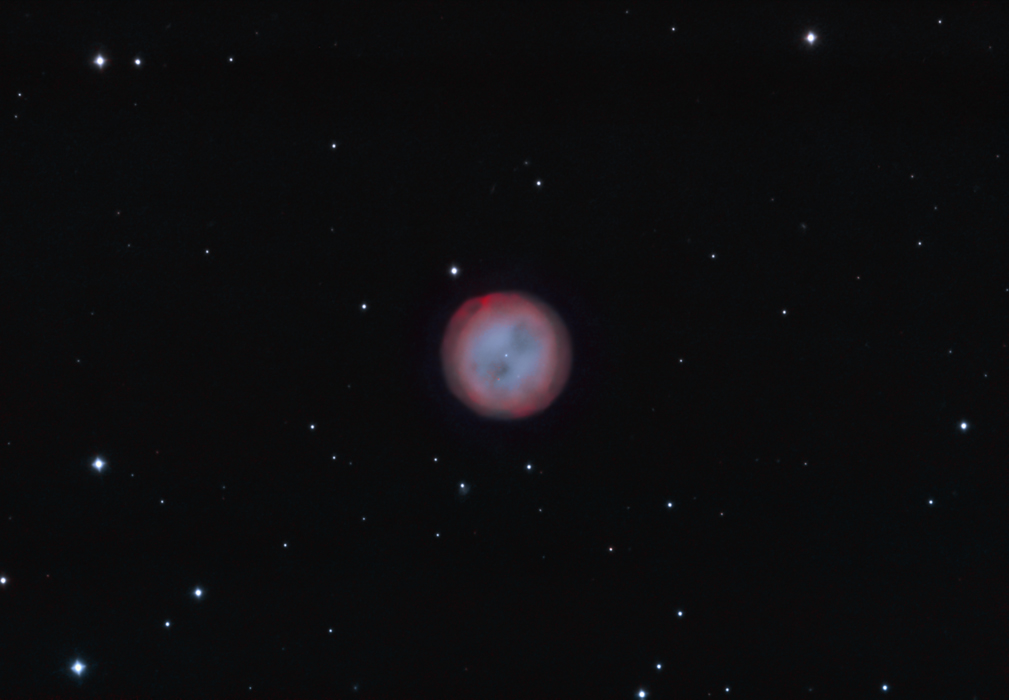Owl Nebula (M97)
Characteristics:
Size: About 4.7'
RA: 11h 15m 18s
Dec: 54 degrees 58' 16"
Position Angle: plus 6 degrees (Pinpoint)
Description:
The Owl Nebula (M97) is a planetary nebula in Ursa Major, discovered by
Pierre Mechain in February 16, 1781. This is the first light
image from my new telescope, a modified Cassegrain model Vixen
VC200L (200 mm aperture, focal length 1800mm, f9). I chose this
scope because I wanted to image at longer
focal lengths, but I also needed to minimize the weight of my equipment
since my set up is entirely portable and non-permanent. At a
focal length of 1800mm, weighing in at around 13.2 lbs (6 kg), and
yielding very flat fields, this scope was perfect for my needs. In
addition, I considered the fact that the best seeing in my location is
in the range of only 2.5". With the Apogee U32 camera (KAF3200
chip with 6.8 um pixels), at a focal length of 1800mm, my image scale
is 0.78"/pixel. As predicted by Nyquist, this image scale is well
matched for seeing in the range of 2.34" (0.78 x 3). So although
I
could spring for a higher focal length set up, it would be heavy, would
cost more, and I would not get any greater resolution since I am
already seeing limited and well sampled at a focal length of
1800mm. More
information about the formation of the Owl Nebula may be found on the
SEDS website as well
as Rob Gendler's website.
Photographic Details:
Date: March 8 and 9, 2008
Scope: Vixen VC200L at f9 on the Takahashi NJP
Mount.
Autoguider: SBIG ST-402 with
Sky90 at f4.5.
Camera: Apogee U32 -20C.
Filters: Astronomik
6nm
Ha filter and 13nm OIII filter.
Exposures: Ha: 8 x 20'; OIII:
8 x 15'. Note that at f9, neither of these subexposure durations
was truly photon noise limited. I need to go longer in the
future. Total
exposure 4.7 hours.
Conditions: Temperature was approximately 28 degrees
F over the course of the night.
Post-processing:
This is an Ha:OIII:OIII composite taken in
moonlight (i.e., no RGB).
Calibrated, aligned, and Sigma Clip combined
in Maxim, followed
by deconvolution using Bob Vanderbei's Fat
Tail Deconvolution script. DDP
in ImagesPlus (IP). Further processing in Photoshop CS (16
bit format).
Please
note: Graphics on this website
may not be reproduced without author permission.
Back to Nebulae
Home
